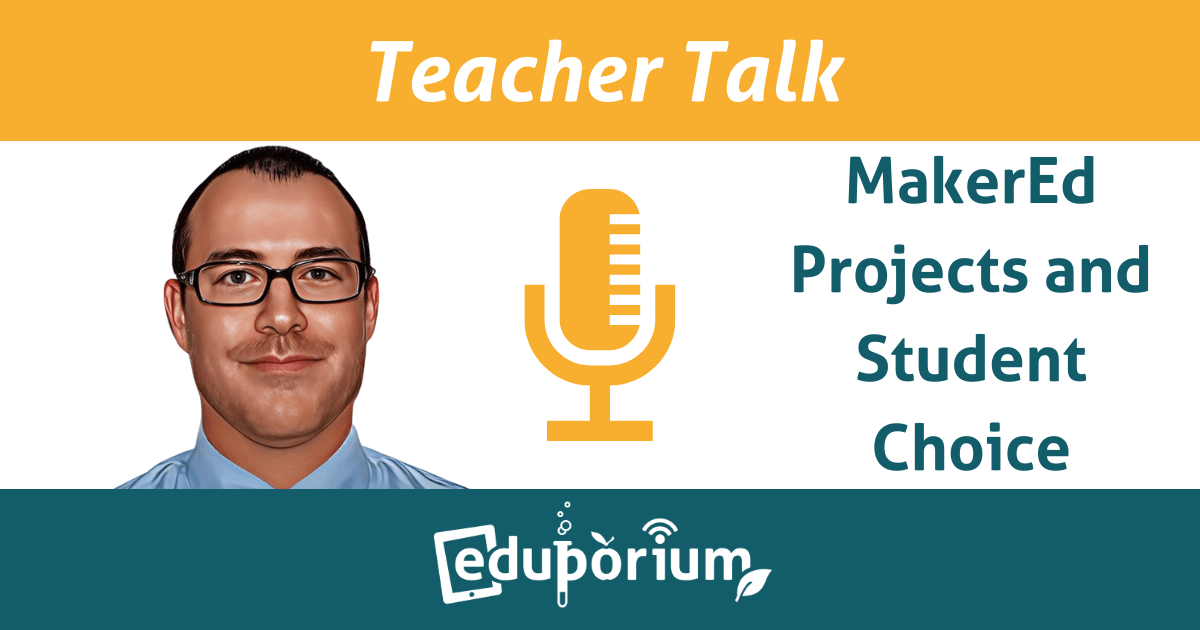Learning looks different for everyone. Some students excel in math but struggle in English, while some kids create amazing projects but can’t recall dates. With neurodivergent students, traditional assessments like essays or tests could cause excess anxiety. Or, for girls and students of color, it might be unusual to have teachers or leaders who look like them. Fortunately, educators today don't have to limit learning to just one particular method.
For this Teacher Talk post, I joined Nicholas Provenzano, a teacher and a makerspace director who has a unique and empathetic perspective on helping students succeed in STEAM. If you're not yet familiar with “The Nerdy Teacher” from his Twitter presence or blog, you’ll definitely want to check out his work. I had an awesome time with him discussing accessibility measures for neurodiverse students, the many benefits of makerspaces, achieving equity in STEM, and more.
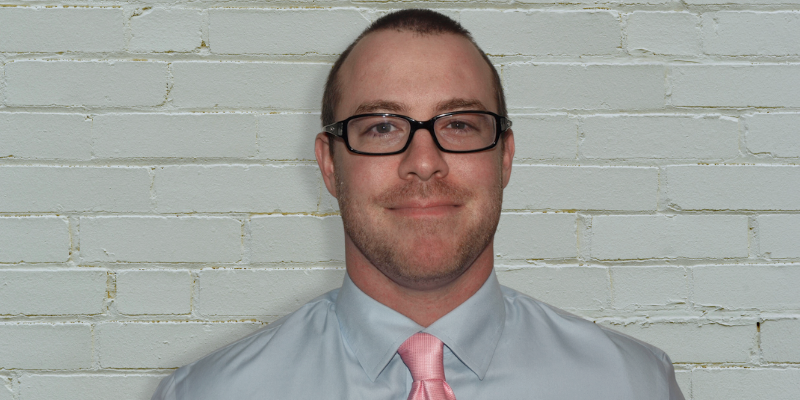
How did you end up doing maker education and project-based learning?
I started teaching 22 years ago as a high school English teacher. During my time as an English teacher, I saw inequity in how standardized tests were used and made. I moved away from [testing] and started to lean more into maker education. Eight or nine years ago, I wrote a grant and I built a makerspace in the library. A lot of people [wondered], “What’s an English teacher doing building a makerspace?” But school makerspaces don’t have to be just for STEM—the arts are an important part of it.
I wanted all my kids to be able to create and design projects. It changed what my kids had access to. They finally had a 3D printer, and some people were coding. I wrote my first book about it: Your Starter Guide to Makerspaces, detailing all my mistakes and what worked.
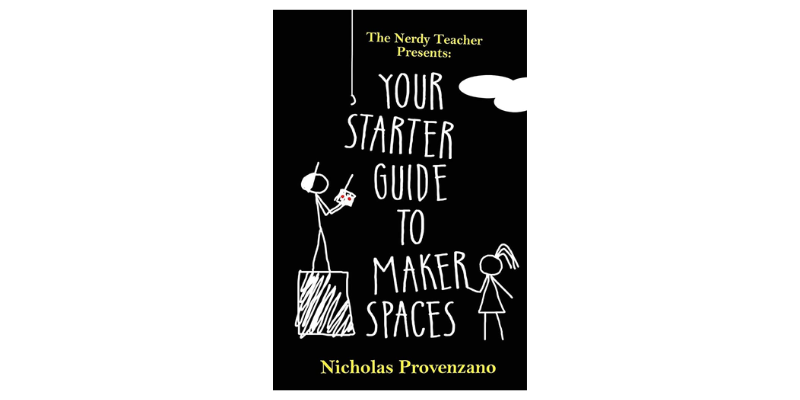
I am currently at University Liggett School, which is a pre-K–12 project-based-learning school. They'd wanted me to build a makerspace, so I left my high school English teaching job to be the makerspace director. This is my sixth year, and I’ve built a chaotic busy space covered in sawdust and projects. Kids are coding and building and designing. I believe there is tremendous value in creating as a means to demonstrate understanding.
First of all, congratulations on the books! You said that in your first book you talk about difficulties you encountered while building the makerspace. What was it like to deal with those?
Thank you. I have always been an advocate of saying, “I don’t know,” when talking with students. Some teachers are terrified of those words, because they’ve got the teacher edition of the textbook, and they have all the answers. So, saying, “I don’t know” is a sign of weakness.
I have never subscribed to that. I found that “I don’t know” is a very powerful set of words that allows you to connect with students. When they ask something and you say, “I don’t know,” the next words are, “Well, let’s find out!”
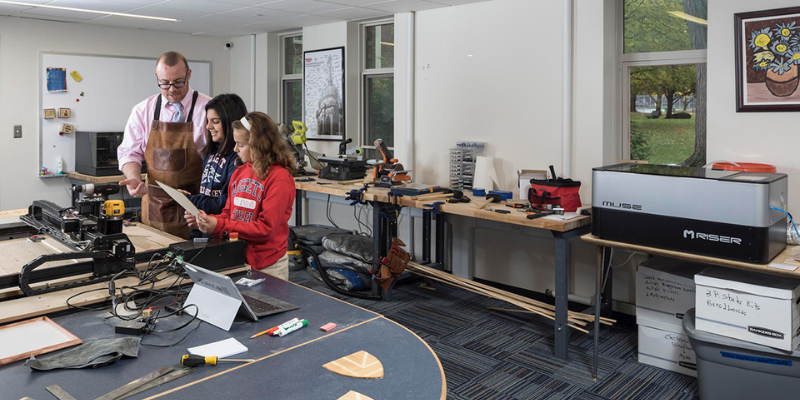
It took me a while to really get comfortable with critiques and feedback from students. I’ve had lessons fail miserably. One time, a lesson wasn’t working. I stopped class midway and said, “Okay, everyone. This isn’t what I wanted it to be. We’re going to change gears.” A kid raised his hand and said, “You can do that?”
If you let yourself fail, then it becomes a safe environment for students to fail too. It builds trust with them.
It’s not normal practice to admit failures to your students. The more I’ve done that, the more comfortable I was trying new and bigger and different things. That’s the whole point of making mistakes. It’s a good way to model failure. The kids think: “If he’s going to put himself out there, I can put myself out there.”
I never want to just share my successes. I think sharing failures as a teacher on social media is important, because there are plenty of people sharing how perfect and wonderful they are at all times. But it’s okay to share our failures. I would hate to contribute to the lack of self-esteem that people might feel because of what social media showcases. We are the sum of our failures, not just our successes.
So, you started as an English teacher, and now you’re doing STEAM. How do you tend to incorporate the arts and humanities into projects?
I’ll always be an English teacher at heart. The arts will always be a part of who I am. My class actually takes place during the arts elective hours, so I’m also part of the arts program. I fit in with science and work with the math teachers, and I did a coding exercise for sixth grade English. All of it integrates wonderfully.
My tagline is: “STEM will make it work. STEAM will make it work and look pretty.” Design is a huge part of what we do, so I teach my classes to focus on design thinking and problem solving. Sometimes you use a 3D printer. Sometimes you might use wood or cardboard or puffy glitter glue—whatever you need to solve the problem.
Can you say more about design thinking and its importance?
Design thinking is person-centered, not problem-centered. You’re not just solving some problem; you’re solving the problem for a person. We are looking for students' ability to understand a problem, empathize with the people having the problem, and create solutions with those people in mind. Then, they view it as a problem-solving exercise to get into someone else’s shoes.
To practice, I give them a design challenge in which they’re set up to fail. The directions are to build me a house in Minecraft, and I’ll pick one that I want to move into. The next day, they have all these wild houses, and I say, “I wouldn’t live in any of your houses.” I can’t have that roller coaster running through the house. I can’t live on an island. Some of them forgot bathrooms, and I need a bathroom in my house. So, we talk about the value of asking questions and how to ask the right questions.
Then, the kids have 20 minutes to ask me all the questions they want, and the next time around, I have these amazing Minecraft houses. All of a sudden, by learning to listen, they’re able to create something. Paying attention, listening, and asking questions is great.
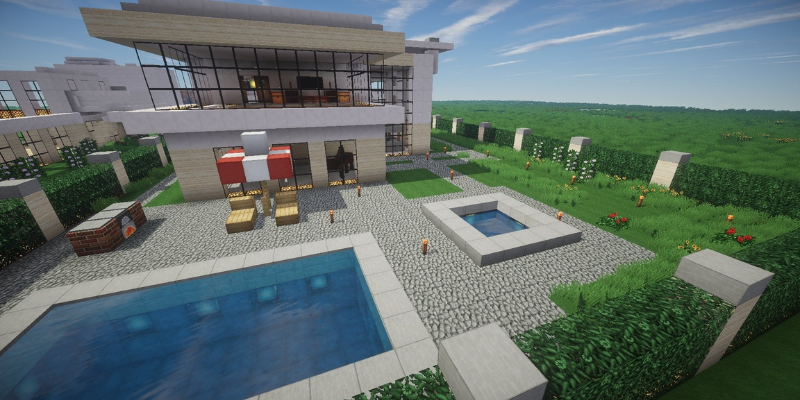
What’s nice about design thinking is that there can be more than one correct answer. I let kids know that just because one team has a different solution doesn’t mean they are right or wrong. They both could be good solutions! Giving them the space to try and fail and try again is super important.
It seems like you’re good at being flexible with students and personalizing their learning. Is that something you work on specifically?
The mentality of a makerspace director is expecting the unexpected. Anyone could walk in asking for anything. Kids will come up and say, “I need a drill. I need some glue and some yarn,” and I gather the supplies and set them up, and off they go.
They learn through the process of solving the problem, instead of me saying, “Everyone sit down to learn 3D printing.” If 25 percent of my kids have zero interest in 3D printing, they’re not going to get anything of value from that unit. Letting [students] choose the tools they want allows them to impart value on each lesson, and therefore, engagement increases.
It’s great that you make sure the students have agency in their projects.
I love to make assignments vague to allow kids ownership. One kid chose photography as a way to demonstrate her understanding of various elements of Gothic literature. She did makeup for her sisters and showed these dark photos that were 100 percent accurate and super artistic.
At the end, another student dragged her to show the photography teacher. This was her sophomore year, and by senior year, she won photography awards and had her work displayed at the Detroit Institute of Art. I reached back out to her when she was in college, and she proceeded to tell me all the stuff that she still remembered [from the unit].
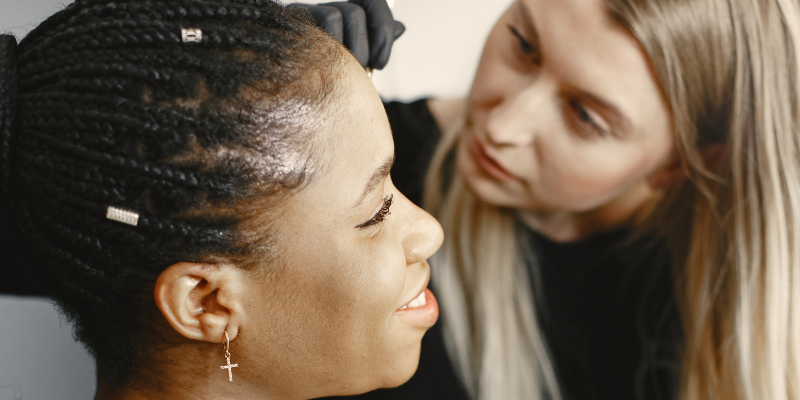
That’s education in a nutshell. If I had given her a multiple-choice test instead, she would have forgotten the information 20 minutes after that exam. Those types of exams don’t showcase what kids know—they showcase their anxiety levels. With projects, I get a better assessment of what kids know. Those photos, the work she did, and the story she’ll have with her sisters will forever be with her. No standardized test or essay can replicate that.
I love that story. It’s so important to tap into your students’ passions outside of a testing environment. My dad struggled with tests in school, but he’s the smartest person I know.
I always think about how many things weren’t invented because of someone’s small-minded view of what learning or intelligence looks like. It’s frustrating that teachers are forced to teach a certain way because of state expectations. When I consult, my job is to give educators a window of opportunity to try a project. It makes a huge difference, and it works out best for any neurodivergent students. I emphasize the value of STEAM for all students, but in particular, neurodivergent students—the students that can’t sit and listen to you talk.
When I shifted to projects, the kids that would have been labeled struggling learners did remarkably well. They still did struggle to read, but they were more engaged because they knew that the project was at the end, as opposed to that dreaded impromptu essay. Whether kids are neurotypical or neurodivergent, when they’re given a chance, they will rise to the occasion. I’ve seen that over and over again.
As a neurodivergent person myself, I appreciate you saying all that. Motivation is different, and our processes are different. Having projects like yours would have been awesome for me at that age.
For me, it’s anxiety and dyslexia, which went undiagnosed until college. The classes I remember the best, that I was the most successful in, were those ones in which I could do projects. When we got to dissect a modern song and identify poetry in it, I chose “Zombie” by The Cranberries. I remember to this day exactly where I was sitting in class. I can’t remember a single test, other than the overall feeling of anxiety. All my best memories are when I was given an opportunity to show what I learned in a way that was good for me.
It wasn’t until I was in college that a professor pulled me aside and said, “Has anyone ever told you you’re dyslexic?” She set me up with support. It was one of the most amazing moments of my life. I wanted to go to every teacher and say, “I told you it wasn’t my fault.” I was told from a very young age that I wasn’t good at math because I switched numbers and no one knew. How many opportunities did I miss because I was written off as not good at math?

That’s why I’m a teacher. You never know what kid sitting in front of you is going to be the one to save the day. By giving kids access, you’re giving them an opportunity to be successful, which is what I want to see happen in schools all over the world.
There’s such a push for equity now, and people are getting opportunities they never would have in the past.
I have a strict “no white guy speaker” policy in my class. I’m a white guy; I don’t need to bring in another white guy to tell you why coding is important. I can bring in a woman of color, because we have girls of color, and I want them to look at someone like them.
I used to coach the robotics team. This one girl of color was really interested in coding, and I said, “I love that you love this. And, if you can get really good at it, you will go to any college you want. But you will not see anyone who looks like you.” That’s the downside.
But, I told her, “By doing this, you’re going to establish other people to do this after you.” She’s a junior in high school now, and last year, she was the lead coder on a national championship robotics team. Now, we have middle school girls looking to her and thinking, “I can do this.”
It’s fundamental to see people who have had different experiences. They represent the kids in the class, whether or not the kids realize it yet. I want them to be able to see someone like them. My job is to be an ally in making things equitable for everyone—women, people of color, and [those with] diverse religions and identities. I want the kids to see that.
We appreciate Nicholas taking the time to talk with us, and we encourage you to check out his website for more insights on equity, design thinking, and student choice. Plus, be sure to follow us on both Twitter and Instagram to stay up to date with MakerEd news!



